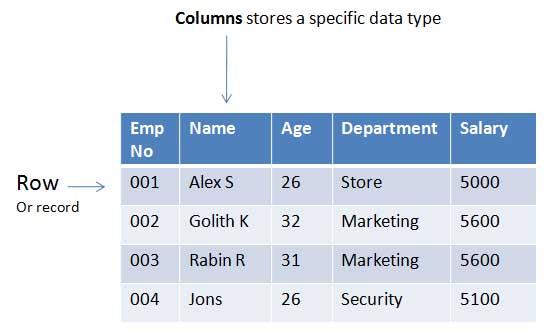A web app that allows users to store bookmarks, using a database.
Clone the repo:
git clone https://github.com/CharlyMannion/bookmark_soloRuby Version:
2.5.0Run:
bundle installTo see the app in your web browser:
rackupThen go to:
http://localhost:9292/We can use the package manager Homebrew to start the install of PostgreSQL:
$ brew install postgresqlAfter Homebrew has downloaded PostgreSQL it will show you some installation instructions: follow them!
PostgreSQL is a database management service. It's handy to keep PostgreSQL running 'in the background'. This command will start PostgreSQL in the background and restart it when you login:
$ brew services start postgresqlPostgreSQL provides a built-in interface, called psql. It's a command-line tool that allows you to interact with databases. You can think of it like IRB: it's a REPL. Where IRB gives you a Ruby interface, psql's interface uses a different language: 'Structured Query Language', or SQL.
psqlalso adds a couple of commands on top of SQL, for interacting with the database system.
PostgreSQL also provides one built-in database, called postgres.
To start psql, type psql <database name> into a Terminal, where <database name> is the name of the database you want to interact with. So, typing psql postgres will give us direct access to that first database:
$ psql postgres
postgres=#
NOTE: You may need to create a database to use psql
createdb "your_user_name_here"Now that we're in the psql REPL environment, let's create the Bookmark Manager database using SQL:
postgres=# CREATE DATABASE "bookmark_manager";
The semicolon is important! SQL is an old language. You've got to end lines with semicolons.
We can now connect to the newly created database using psql's \c command:
admin=# \c bookmark_manager;
And inspect the existing list of tables:
admin=# \dt
We should get something along the lines of No relations found.. That makes sense: we haven't built anything in this database yet.
Data is stored inside rows of database tables:
The structure and contents of these tables tell you everything about what that data is. Tables are a very fast way to look up data. To make them even faster, every row in a table is normally given a unique identifier: an 'ID'.
In a Relational Database like PostgreSQL, the structure and contents also tell us about what data relates to other data. More on that later.
Tables tend to map onto objects in our program that we want to persist. We're going to make a bookmarks table that will store bookmarks from our application. We can use SQL commands from psql:
bookmark_manager=# CREATE TABLE bookmarks(id SERIAL PRIMARY KEY, url VARCHAR(60));
Now inspect the list of tables again, using \dt. You should see one with the name bookmarks.
Run psql, then add the url's to the bookmarks table, in the "bookmark_manager" database by running the following three commands:
INSERT INTO bookmarks (url) VALUES ('https://www.picturehouses.com');
INSERT INTO bookmarks (url) VALUES ('https://loveinternationalfestival.com');
INSERT INTO bookmarks (url) VALUES ('https://www.bbc.co.uk/weather/2641776');
To check the table contains the url's, run:
SELECT * FROM bookmarks;
Now we need to build a test environment, including a test database, so that our tests do not fail when data is added to the database.
$> psql
admin=# CREATE DATABASE "bookmark_manager_test";
admin=# CREATE TABLE bookmarks(id SERIAL PRIMARY KEY, url VARCHAR(60));
Run the query we have saved in the file 01_create_bookmarks_table.sql
Install TablePlus, to get a better picture of the database and interact with it more easily.
To install the program:
- Download TablePlus.
- Drag the TablePlus app into your
/Applicationsdirectory. - Double-click to start it.
TablePlus needs to know some details about your Postgres server. In particular, it needs to know:
- Where it is;
- What login details are required;
- What database it should start with.
We have answers for all three:
localhost(i.e. your PostgreSQL server is running 'backgrounded' on your local machine, on Port 5432)- Your computer's name as a username (or, you can find this out by listing databases in
psql), and no password - The
bookmark_managerdatabase.
As a user,
So I can have access to my favourite web pages
I want to see a list of my bookmarks.
As a user,
So I can go back to a page later
I want to save it in my bookmarks.
As a user,
So I can remove the pages I no longer need,
I want to delete bookmarks from the list.
As a user,
So I can amend changed bookmarks,
I want to modify an existing bookmark.
As a user,
So I can remember what a page is about,
I want to add a comment to a bookmark.
As a user,
So I can organise my bookmarks,
I want to add category tags to my bookmarks.
As a user,
So I can see similar bookmarks together,
I want to filter my bookmarks by tag.
| Component | Responsibility | Refactor |
|------------ |--------------------------------------------- |---------------------------------------- |
| Model | Encapsulate logic with relevant data | Encapsulate bookmark data in a class |
| View | Display the result to a user | Show the bookmark data in a list |
| Controller | Get data from the model and put in the view | Render bookmark data into to the view |

